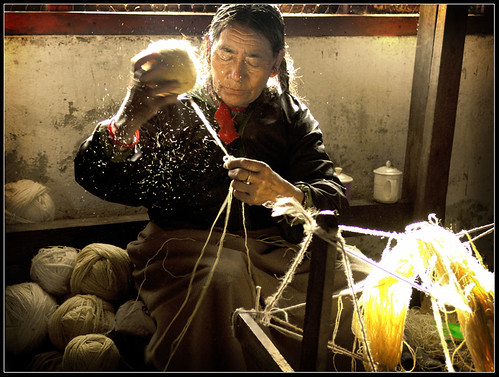by Michael Keizer on February 18, 2009

Logistics can impact quite severely on public health. If we do our work well, health professionals and patients get their supplies and lives are saved. If we goof up, those same lives might be lost. But sometimes, things become much, much worse.
A faulty logistics management system at the Peanut Corporation of America was partly to blame for a recall that ended with the corporation recently filing for bankruptcy protection. But in the mean time, 19,000 people had become ill , of which nine died, due to infection of certain products with salmonella.
Good logistics can be a lifesaver in the most literal sense of the word; but bad logistics can just as literally be a killer.
[Picture by joannapoe. Some rights reserved.]
{
by Michael Keizer on February 15, 2009

The Zaragoza Logistics Center (a research institute that is run by the University of Zaragoza and MIT) offers a “Global Health Supply Chain Internship”, combined with a scholarship that would pay for tuition, administration fees, books, and even a modest stipend. In their words:
The Global Health Supply Chain Internship provides the opportunity for an exceptionally qualified candidate to pursue a uniquely designed 2 year engagement with the MIT-Zaragoza International Logistics Program. This paid internship will enable the student to gain valuable first hand experience working on strategic global health supply chain projects while at the same time pursuing a Master of Logistics and Supply Chain Management. The intern will become a member of the Global Health Research Group (GHRG), will assume significant responsibility, and will work directly with collaborating institutions.
More info here.
[Photo: Basilica del Pilar, sunset by Paulo Brandão. Some rights reserved.]
{
by Michael Keizer on February 14, 2009

I recently bought thermal underwear from New Zealand outdoor clothing manufacturer Icebreaker. I am not going to bore anybody with an account of how good their stuff is (but yes, it is very good), but tell you a little story about the origins of my undies.
The wool for my leggings came from four of Icebreaker’s 120 sheep stations: Walter Peak Station, Olvig Station, Omarama Station, and Te Akatarawa station, which are all located in the South of New Zealand’s South Island. How do I know? Every Icebreaker garment contains what they call a baacode (no, they will not win the price for the world’s greatest wits). This code links to a database that contains production data for each of the batches of fabric that are used for their products, back to the original station and wool batch data. This is all part of what Icebreaker calls their ‘transparent supply chain‘.
Obviously, in medical logistics, such transparency is as least as important. Everybody who has ever been involved in a product recall will be able to testify to the difficulties that always crop up as a result of a lack of data about exactly which products are where in the supply line. Yet our supply lines are normally quite a lot simpler than Icebreaker’s: for each product, we usually have only a couple of potential suppliers (not more than 100 like Icebreaker), and we usually have only some tens of distribution points, a couple of hundreds at the outside (not thousands); yet we are hardly ever able to easily perform a trace like this one without a lot of hard work (which is too bad), often taking a lot of time to do so (which is a lot worse, knowing that in the mean time people could die from the effects).
Logistics management in medical aid work rarely use relatively simple tools like traces of from cradle to grave. Taking into account what this could mean for our patients, it is high time that we start implementing this as a minimum standard.
Icebreaker shows that this is more than empty wool-gathering.
Update (27 April 2009): I have written an expanded post on visibility and transparency (and some sunshine). Go and read!
Illustration: Wool by Sukanto Debnath. Some rights reserved.
{



